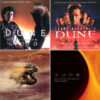LaserDiscs were first introduced in 1978 and looked like giant 12” DVDs. Each side of a disc held between 30-64 minutes, depending on several factors, which resulted in viewers having to get up several times during the film to flip the disc, or—in case of long movies like Dune—to insert another.
Between 1985 and 1997, David Lynch’s Dune movie received 11 LaserDisc releases, from five different countries. In this article we look back at these; from basic VHS “upgrades” to the first widescreen releases and collectible box-sets from the U.K and Japan.
American
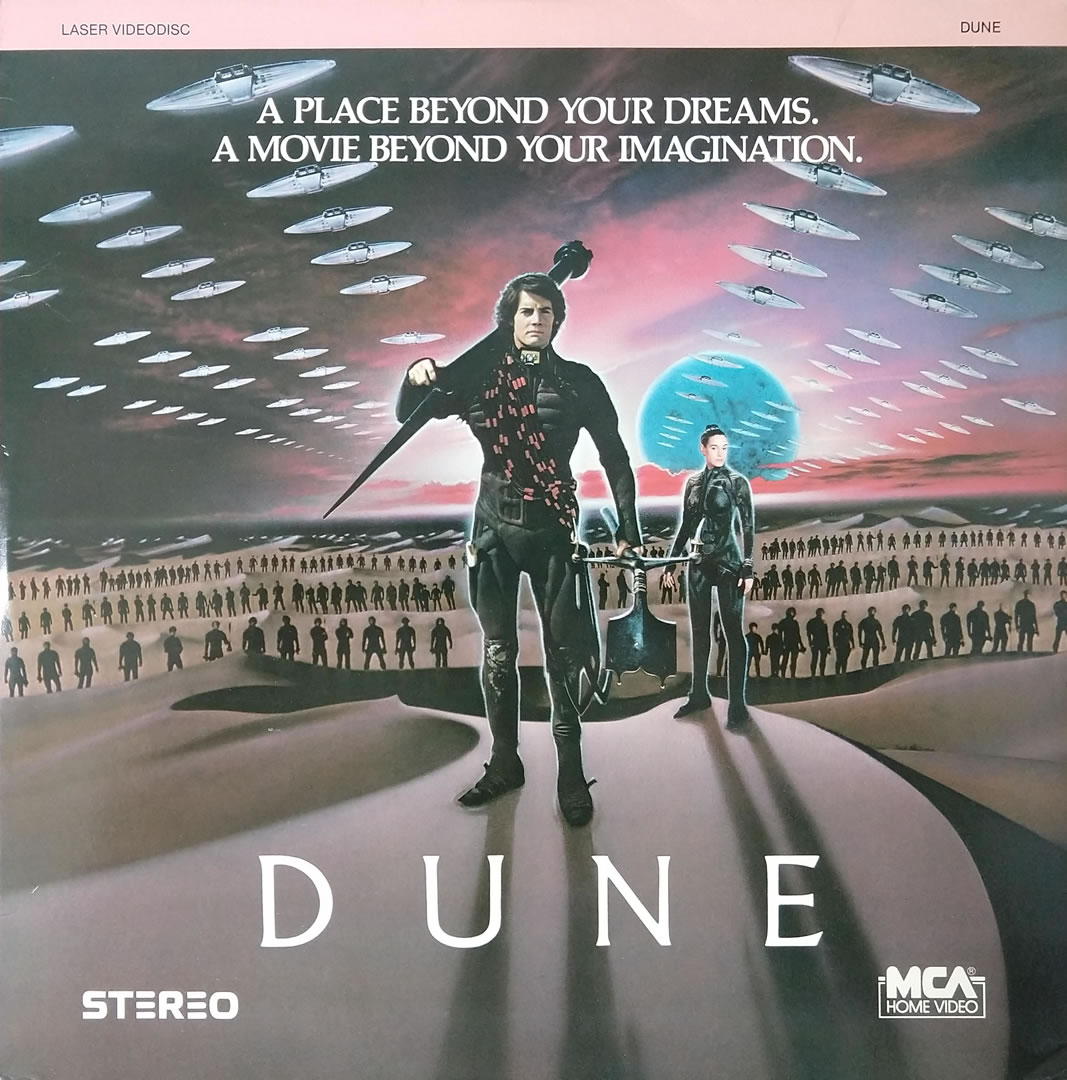
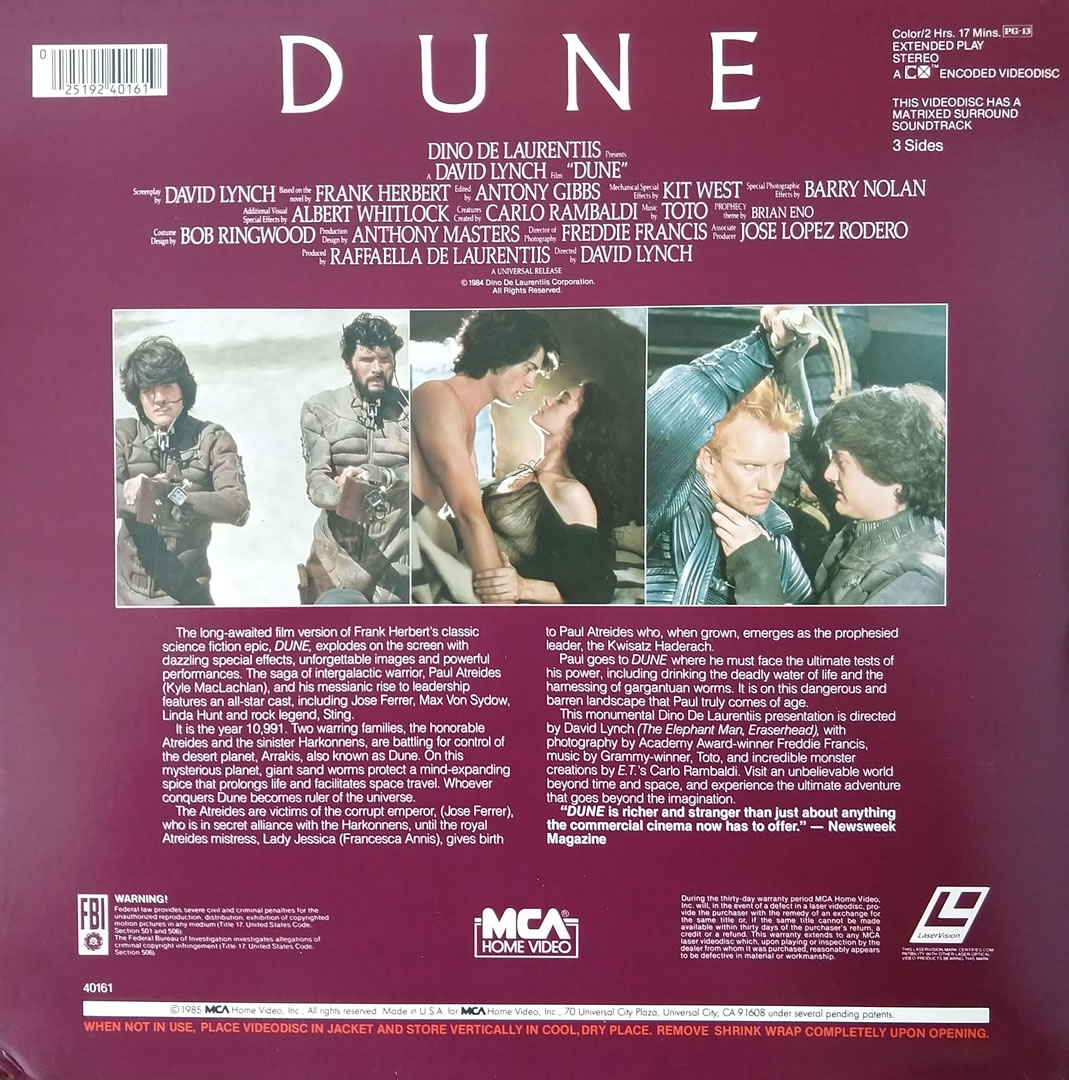
Two Dune LaserDiscs were released in the United States, both featuring the same cover illustration of Paul with his maker-hook and thumper. The first in June 1985—a mere six months after the theatrical release—was in pan and scan / 4:3 ratio (although opening prologue and credits are letterboxed) by MCA Home Video, priced at $24.98. The 137 minutes were spread across three sides of two discs in NTSC CLV (Constant Linear Velocity) format. Audio was in analog Dolby Surround using the CX encoding system.
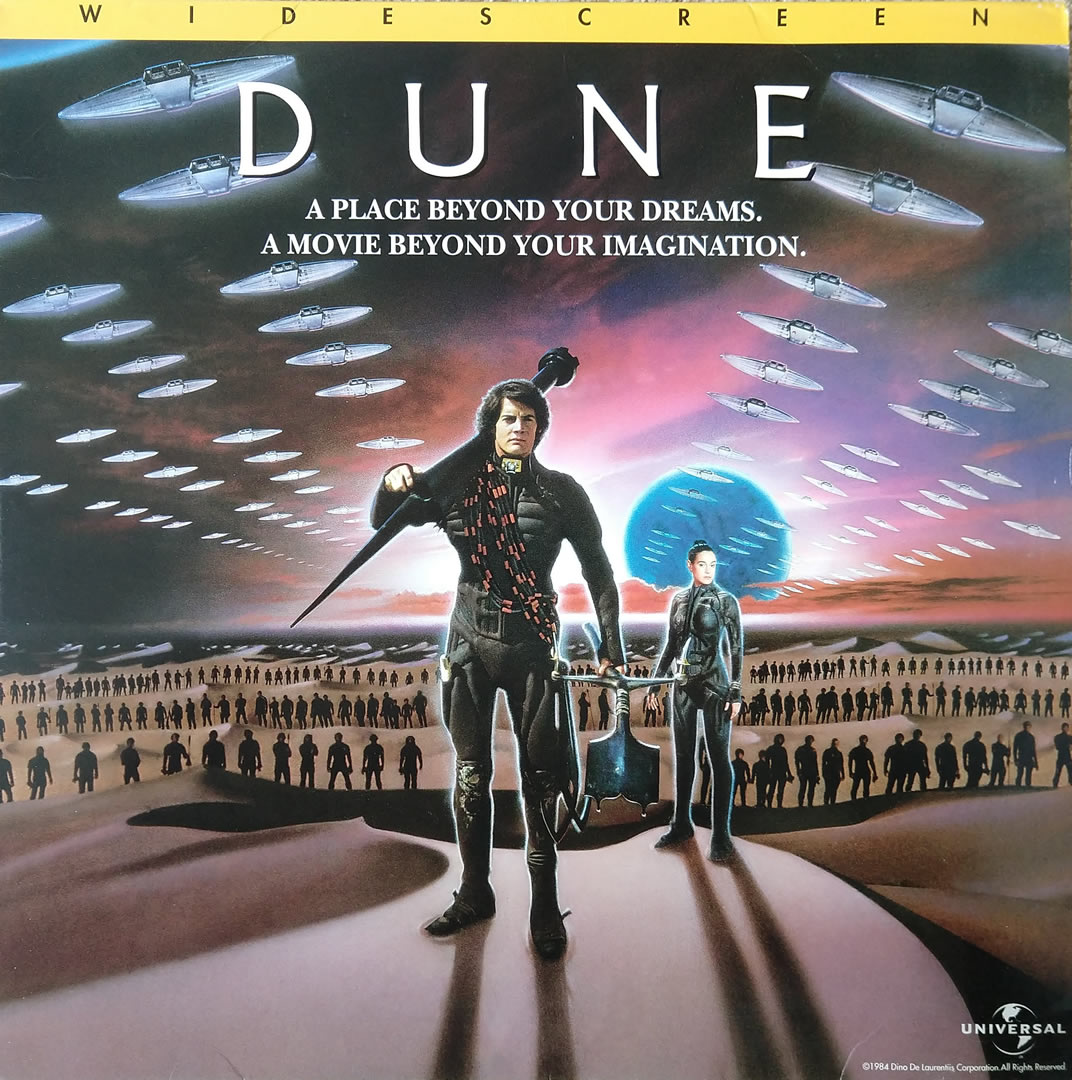

The second was released on the December 16, 1997, just over 13 years after the original theatrical release. Again the 137 minutes were spread across three sides of two discs, but this time in 2.35:1 letterbox format. The audio was also improved, adding a Dolby Digital 5.1 track to the analog Dolby Surround track. Optional English subtitles were included. The RRP was $39.98.
Note: Dune was released in the U.S. on DVD on March 31, 1998 by Universal.
British
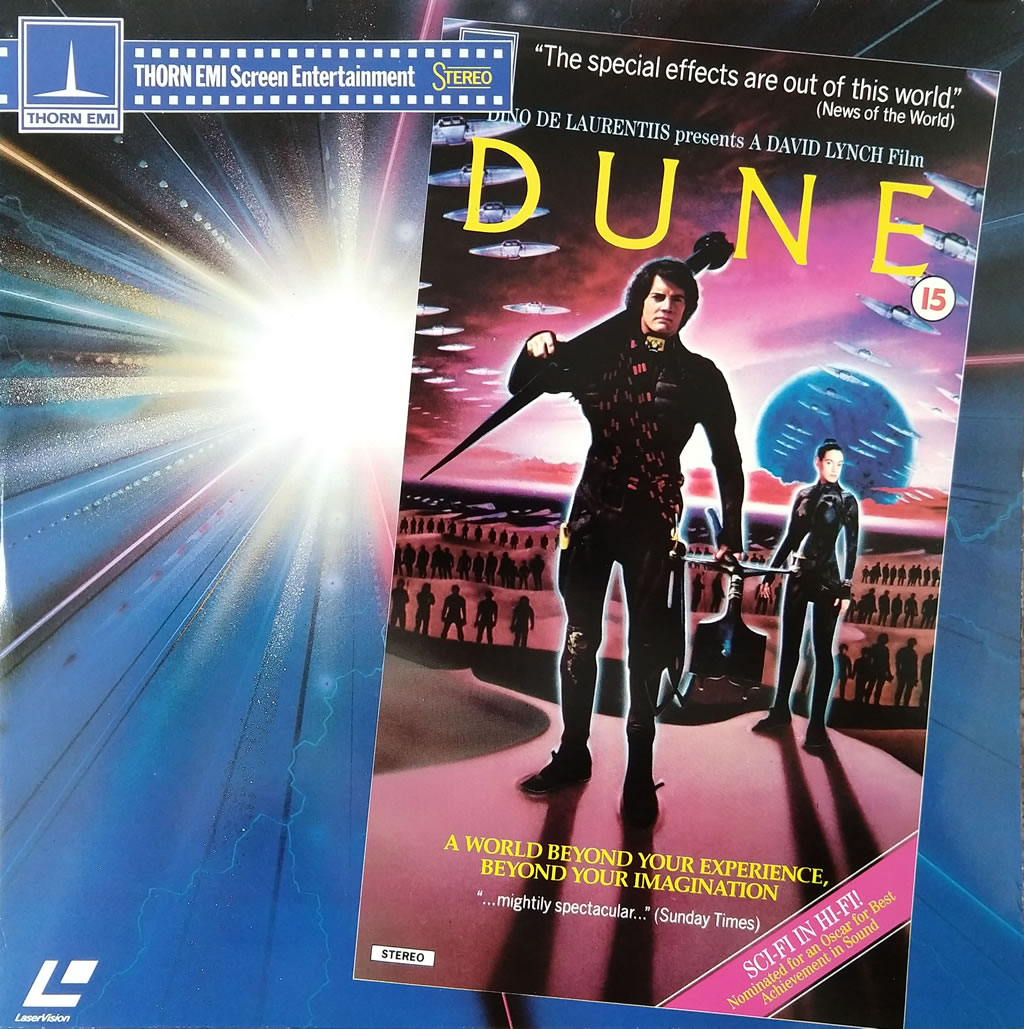
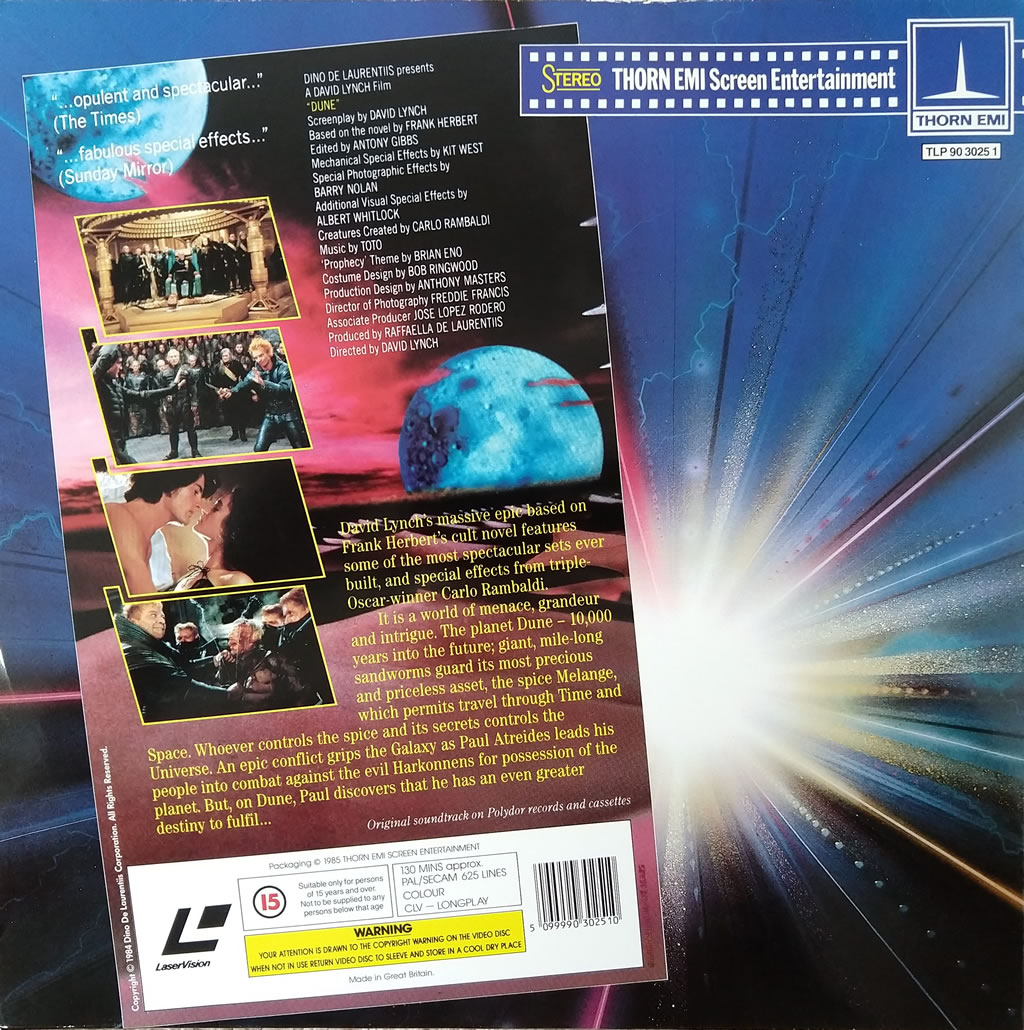
The first U.K. LaserDisc release of Dune was in August 1985 from Thorn EMI Video, for £24.99. As the U.K. uses the PAL video system, the running time was only 130 minutes. This was due to the 4% speedup experienced when playing a film shot at 24 fps (frames per second) at 25 fps instead.
The film was spread across three sides of two discs in pan and scan (4:3) CLV format. Audio was only in analog stereo. This is reportedly just a transfer of Thorn EMI’s VHS release.
This releases had gatefold sleeve packaging, with its inner design containing adverts for other “Laser releases from Thorn EMI.” Not even bothering with new images for the front and back, Thorn EMI just used images of their VHS release!

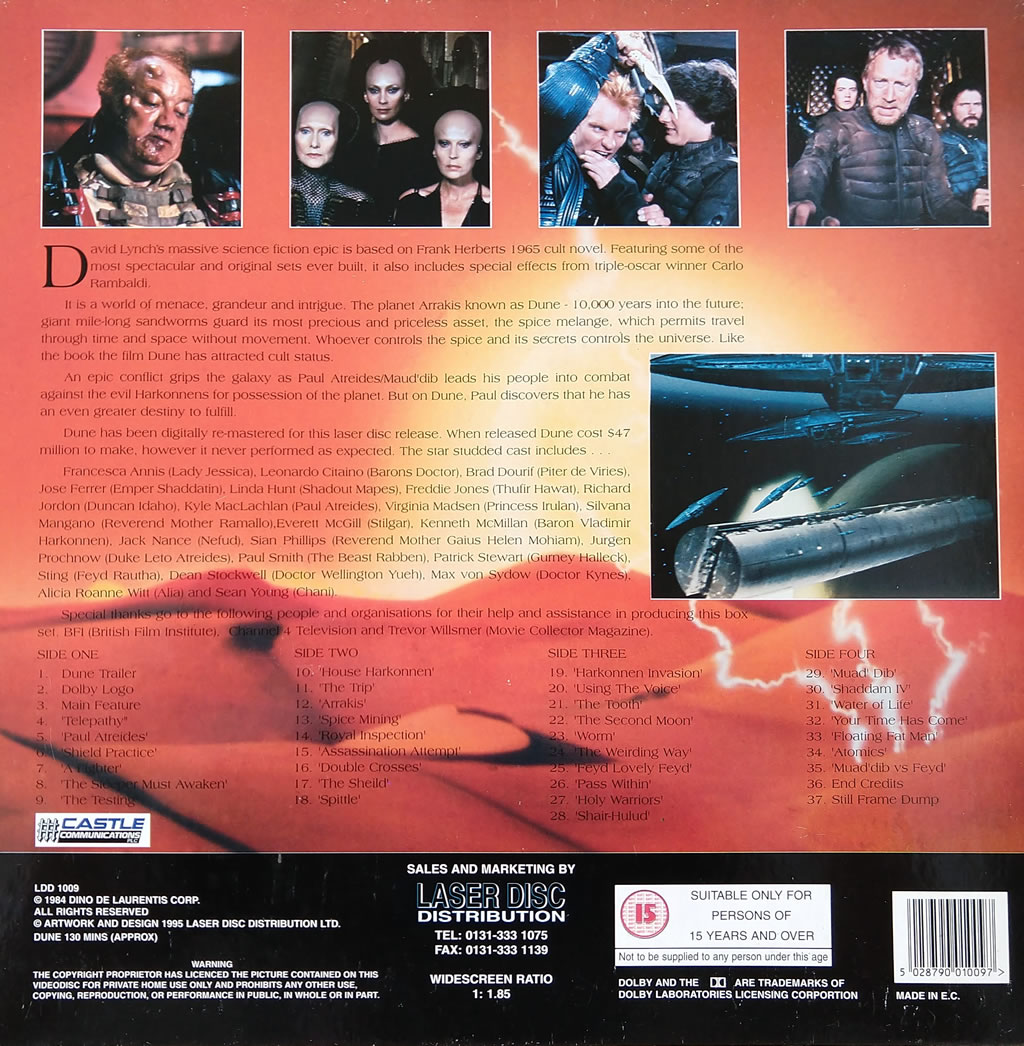
A much-improved limited edition (of 2,000) U.K. release arrived in 1995, by Laser Disc Distribution for a whopping £59.99 – although you did also get a t-shirt! Presented in a thick black box, it featured the U.K. quad-poster of the two moons on its cover and contained a reproduction of said poster in the box too.
The 131-minute film was spread across all four sides of two discs, but also includes the trailer and an extra chapter containing 299 stills, prints of which could be ordered.
Oddly the picture format was in 1.85:1 (apart from the first four minutes or so), resulting in some cropping of the image from the side of the frame. The video used the CAV (Constant Angular Velocity) scheme, allowing for freeze frame, slow motion, and reverse playback. Audio had a digital Dolby Surround track.
Japanese
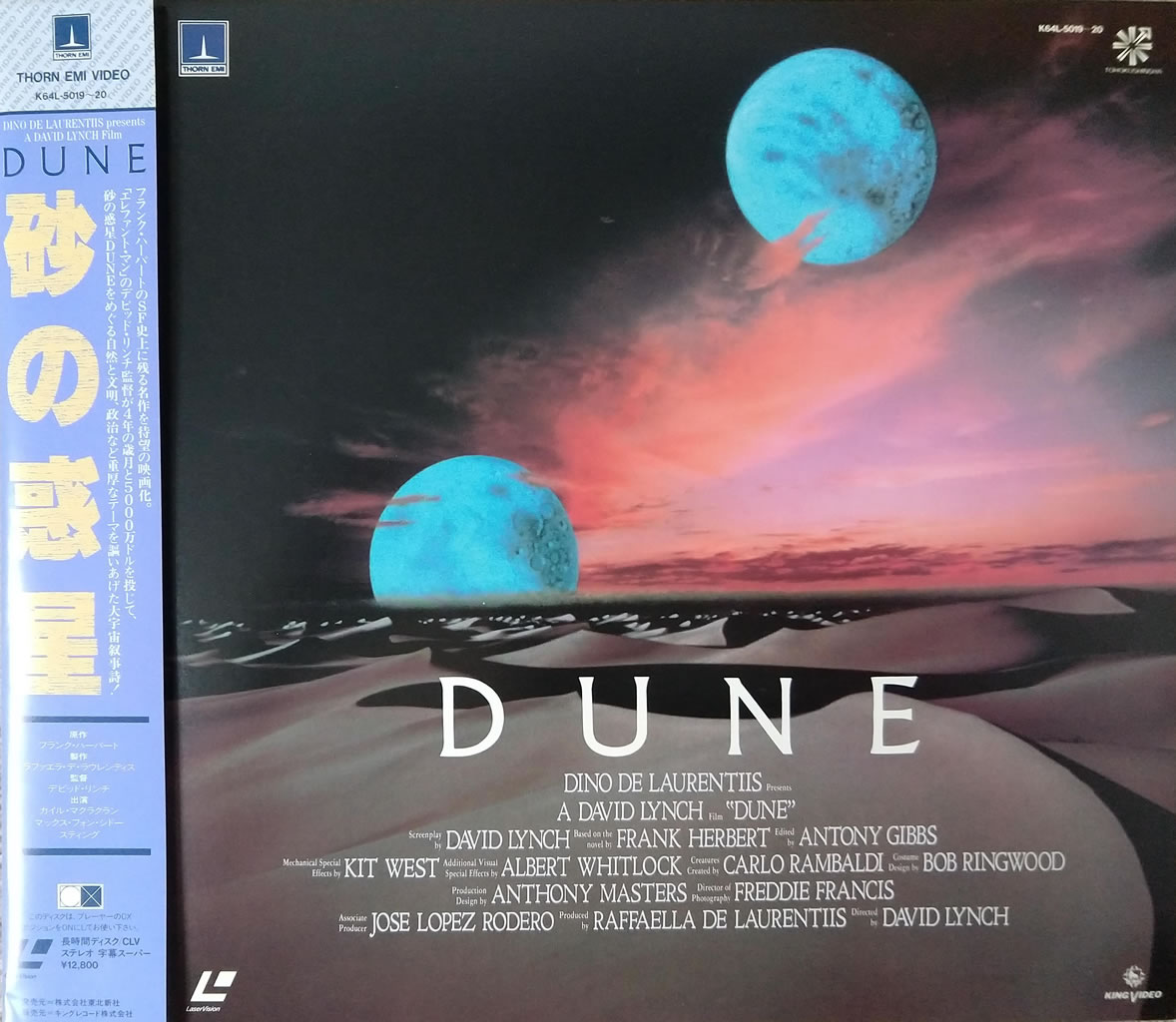
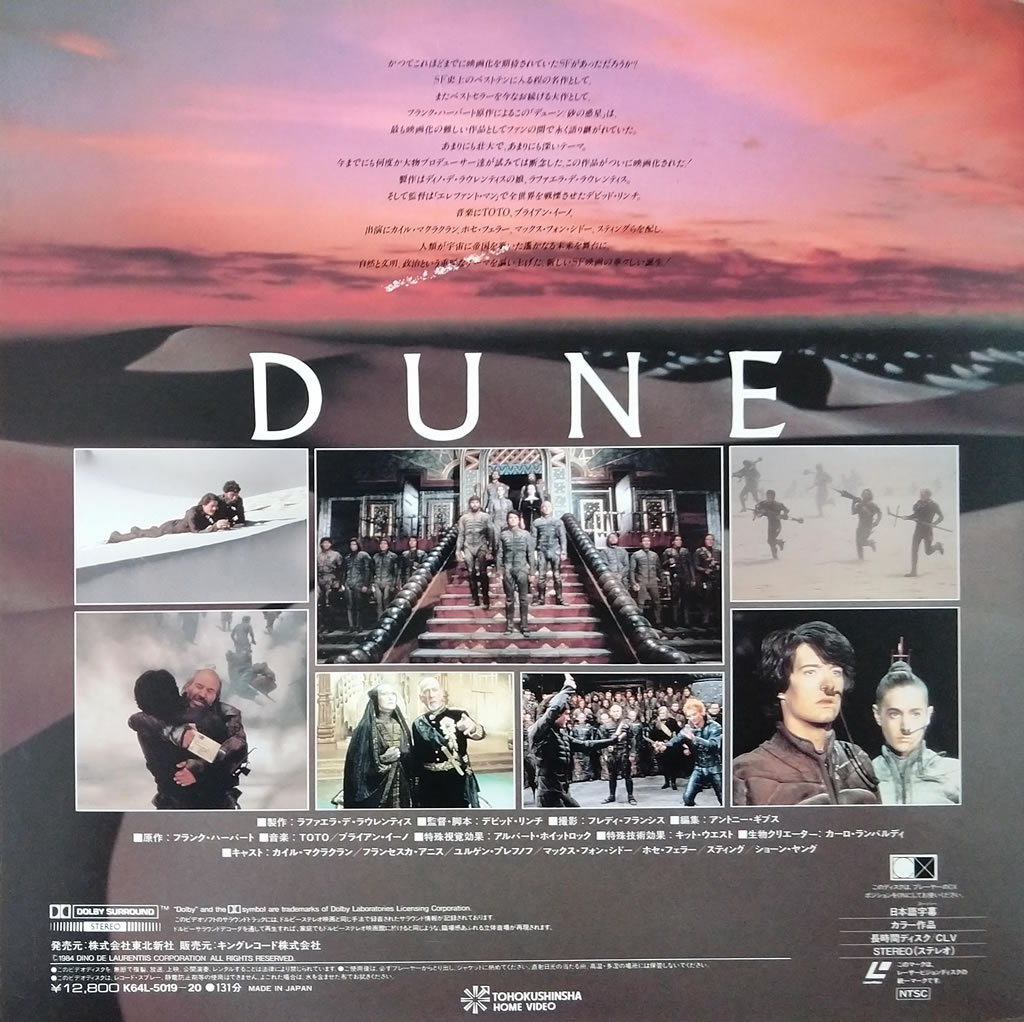
Japan seems to love Dune, with four separate LaserDisc releases. The first in December 1985 by Tohokushinsha Home Video, a CLV pan and scan picture format (4:3 ratio) spread across three sides of two discs.
Although the picture was in NTSC format, it had a running time listed as 131 minutes, which suggests either a mistake or a conversion of a PAL release to NTSC. As was common for Japanese LaserDiscs it had an “OBI”, a paper strip on the cover. The OBI and the two-moon cover mention Thorn EMI Video (aformentioned U.K. release from August 1985), perhaps the source of the video. That would explain the stated 131-minute running time.
Audio was an analog English Dolby Surround with in-picture Japanese subtitles.
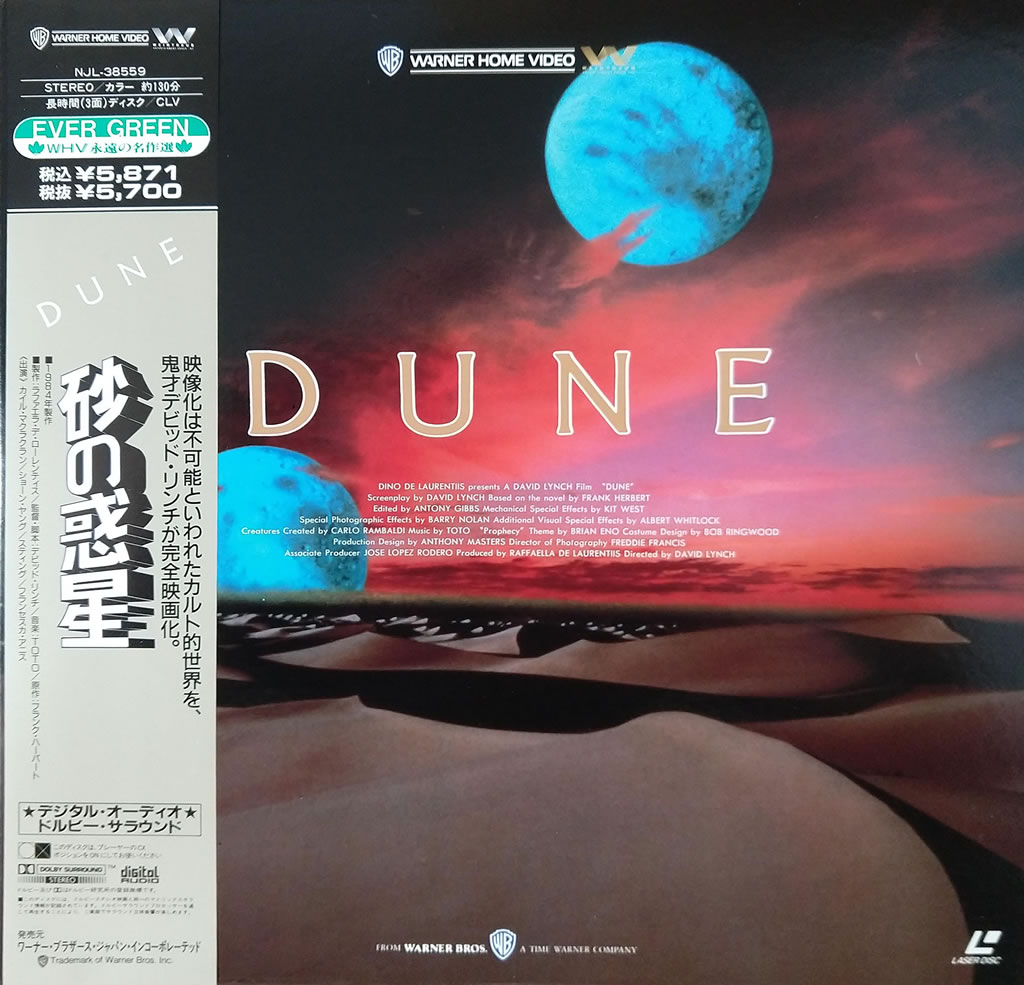

The next Japanese release, by Warner Home Video in October 1990, was only a slight improvement. A digital Dolby Surround track was added, in addition to the analog one, but this still had a pan and scan picture format. The cover again used the two-moon image.
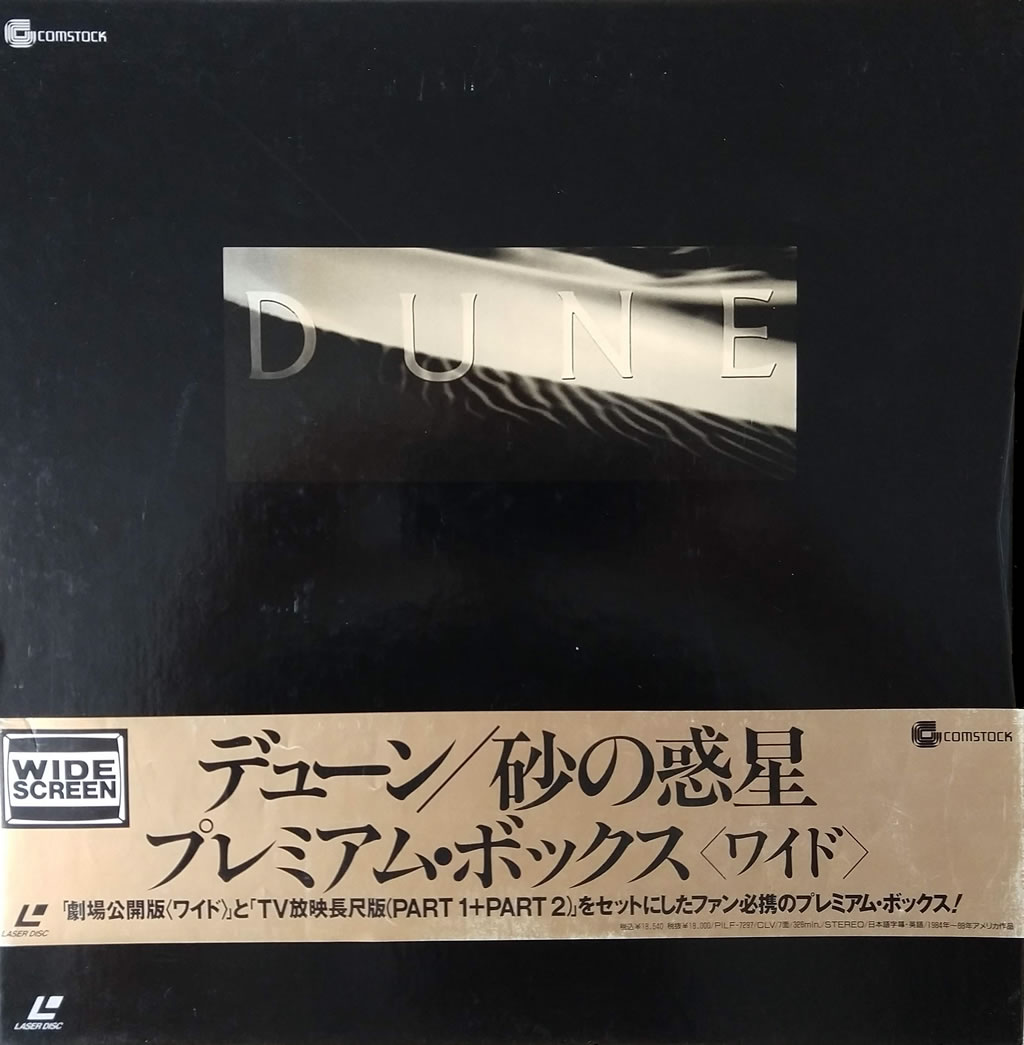
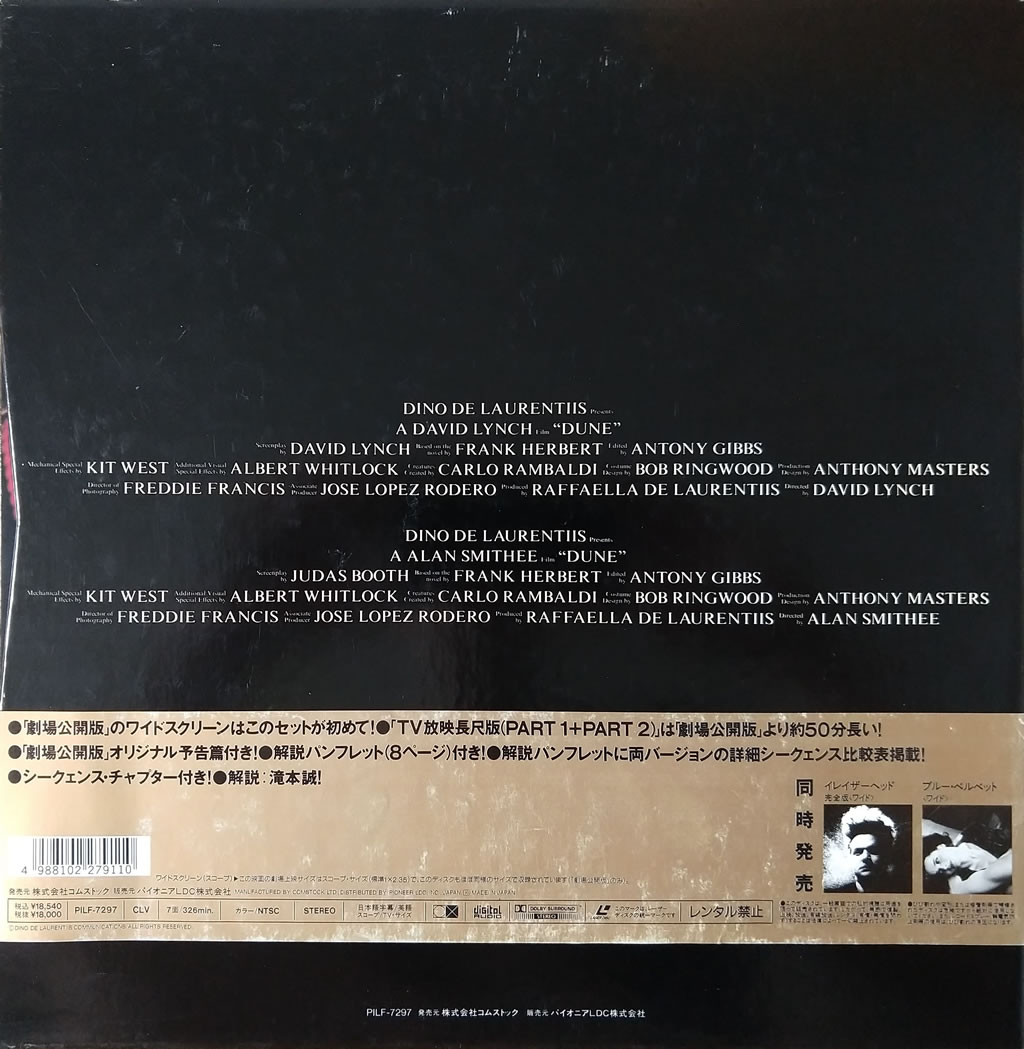
In November 1994 Comstock released a special four-disc box-set, which not only contained the 137-minute theatrical release but also the 189-minute “Alan Smithee” TV edit, presented in a thick box with a gold Dune logo, and an OBI paper strip.
The theatrical release was in 2.35:1, making it the first LaserDisc to have Dune in Widescreen, with in picture Japanese subtitles. Whereas the included TV edit was in pan and scan 4:3 image ratio, which was the only format the it could be found in, until the U.S. Dune Extended Edition was released on DVD in January 2006.
The running time of 189 minutes was longer than usual, for the TV edit, due to the fact it is split into two parts. Credits ran at the end of part one and a “previously on Dune” type of recap was added to the beginning of part two. The theatrical trailer is also included as an extra.
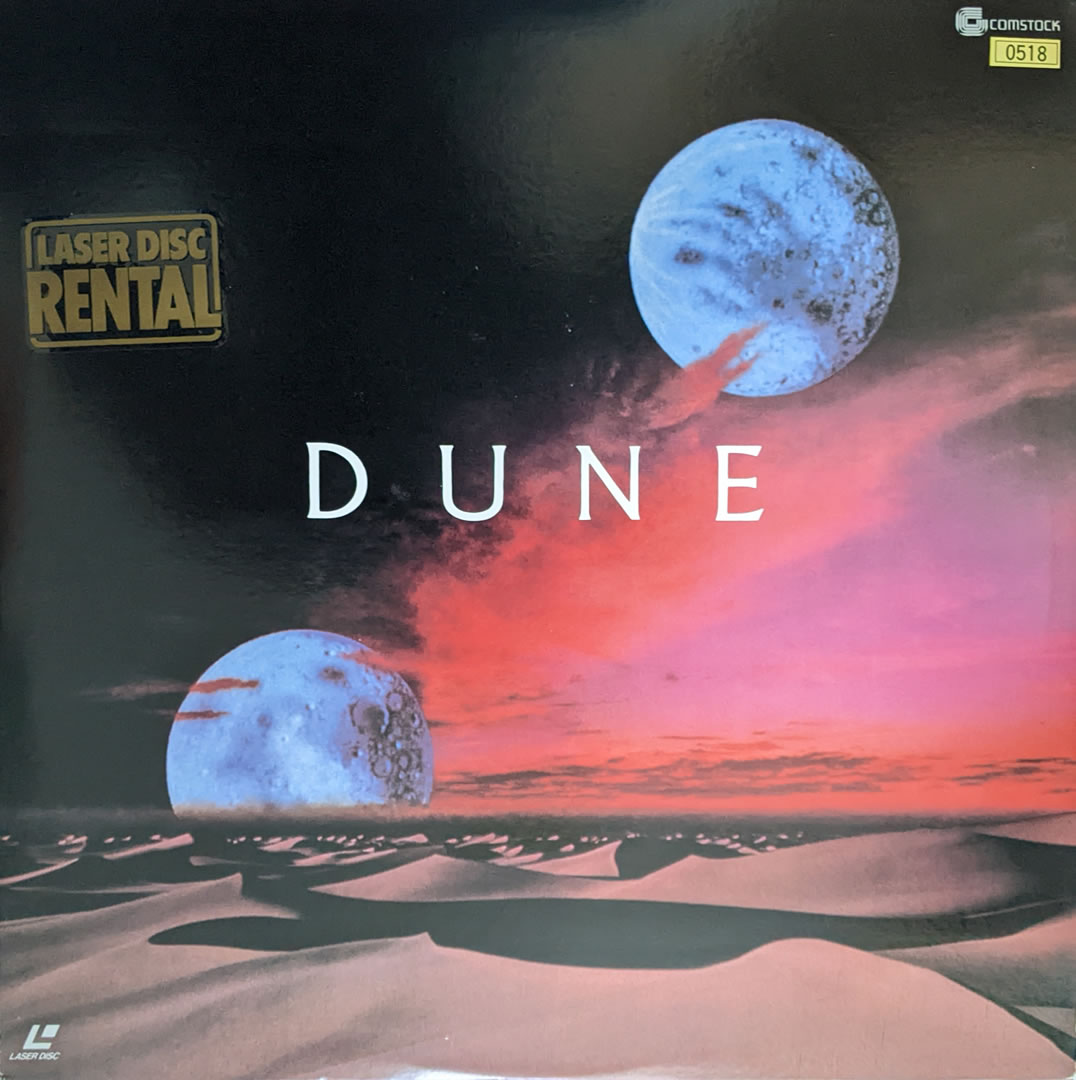

The final Japanese Dune LaserDisc was a rental edition from April 1995, which appears to be identical to the Comstock 137-minute widescreen version in the box-set, even down to the artwork used.
French
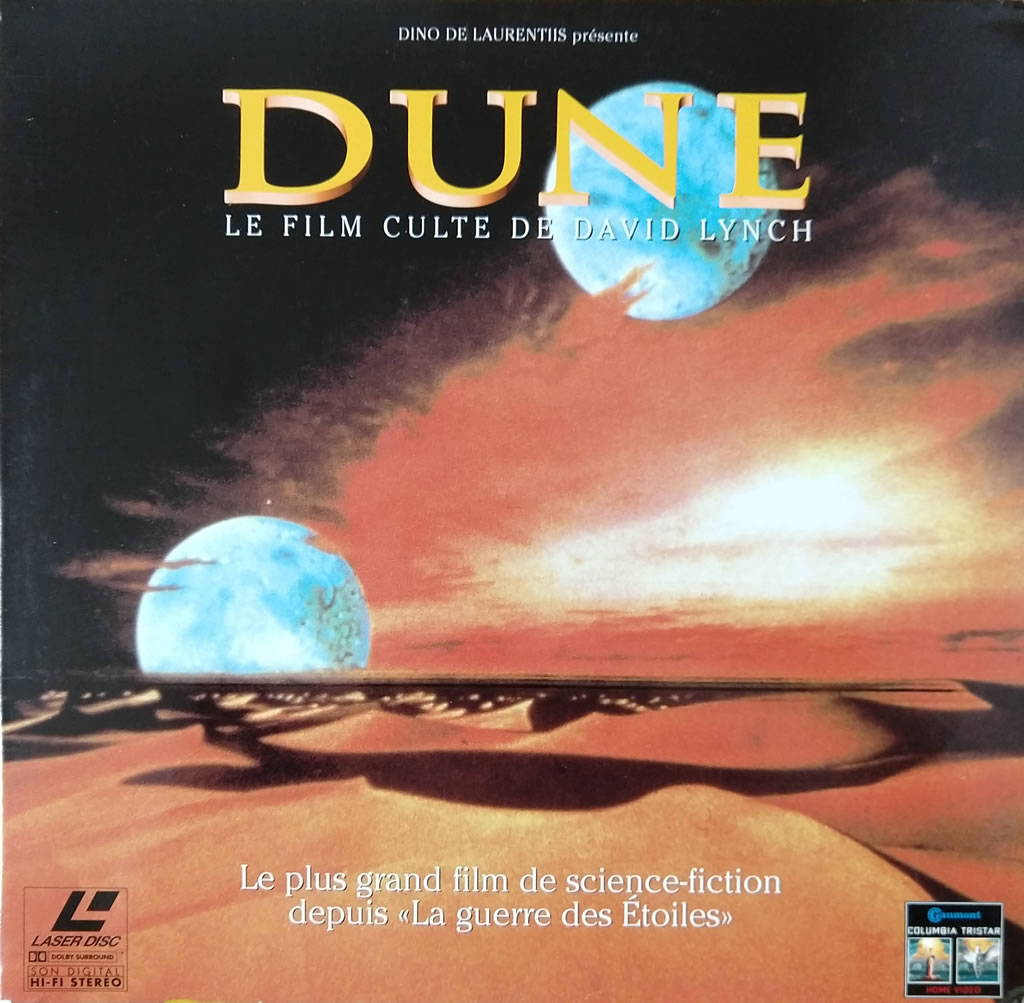
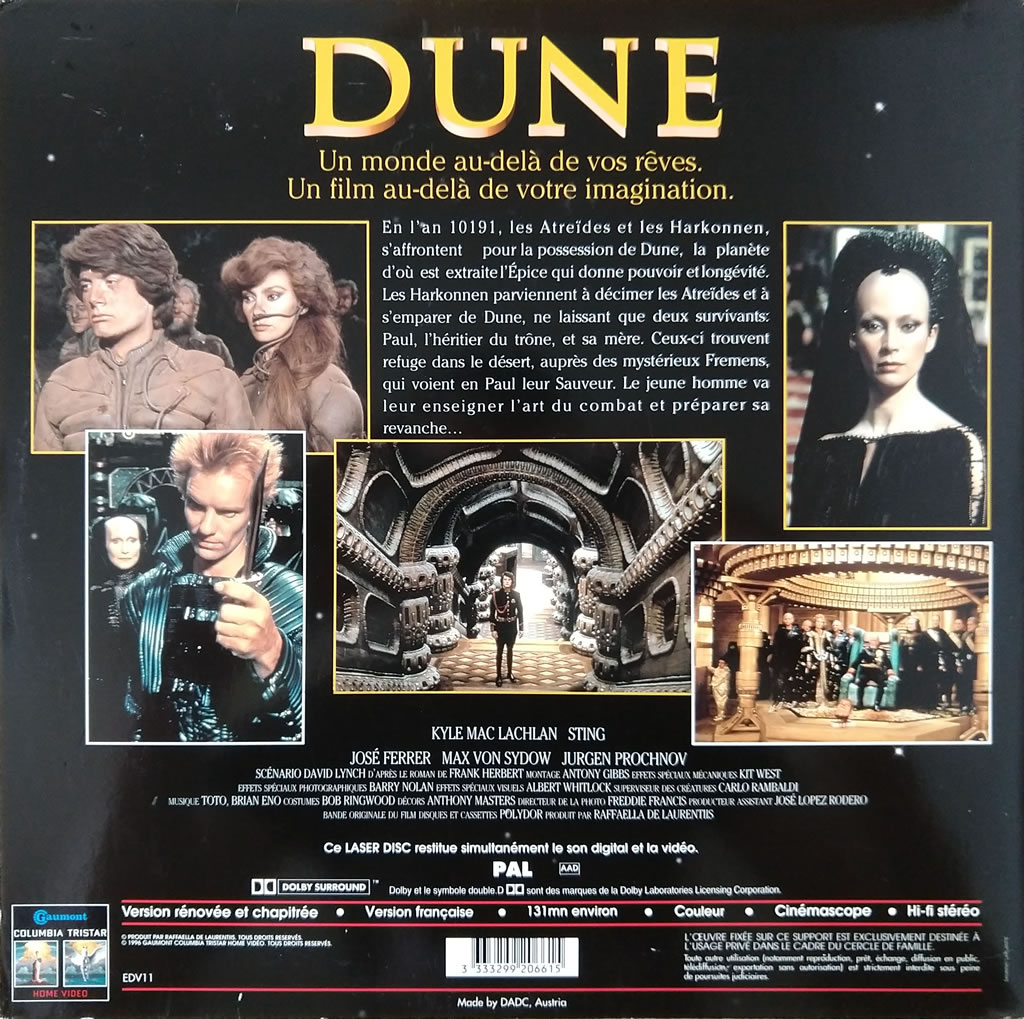
France has released two Dune LaserDiscs published by Gaumont Columbia Tri-Star, both in CLV 2.35:1 letterbox format, with 131 minutes (given the PAL 4% speedup) split across three sides of two discs. The only visual difference between releases is that one had an English Dolby Surround digital audio track (with French subtitles) and the other was dubbed into French, again on a Dolby Surround digital audio track.
The dubbed version was released in March 1996. Although there is no information on the release date for the subtitled version, given the other similarities between the two, it seems likely that they shared the same or similar date.
Both covers featured the two moons over Arrakis and are identical apart from a small box containing “Version originale sous titres Français” (Original version with French subtitles), which appears on the subtitled version.
Italian

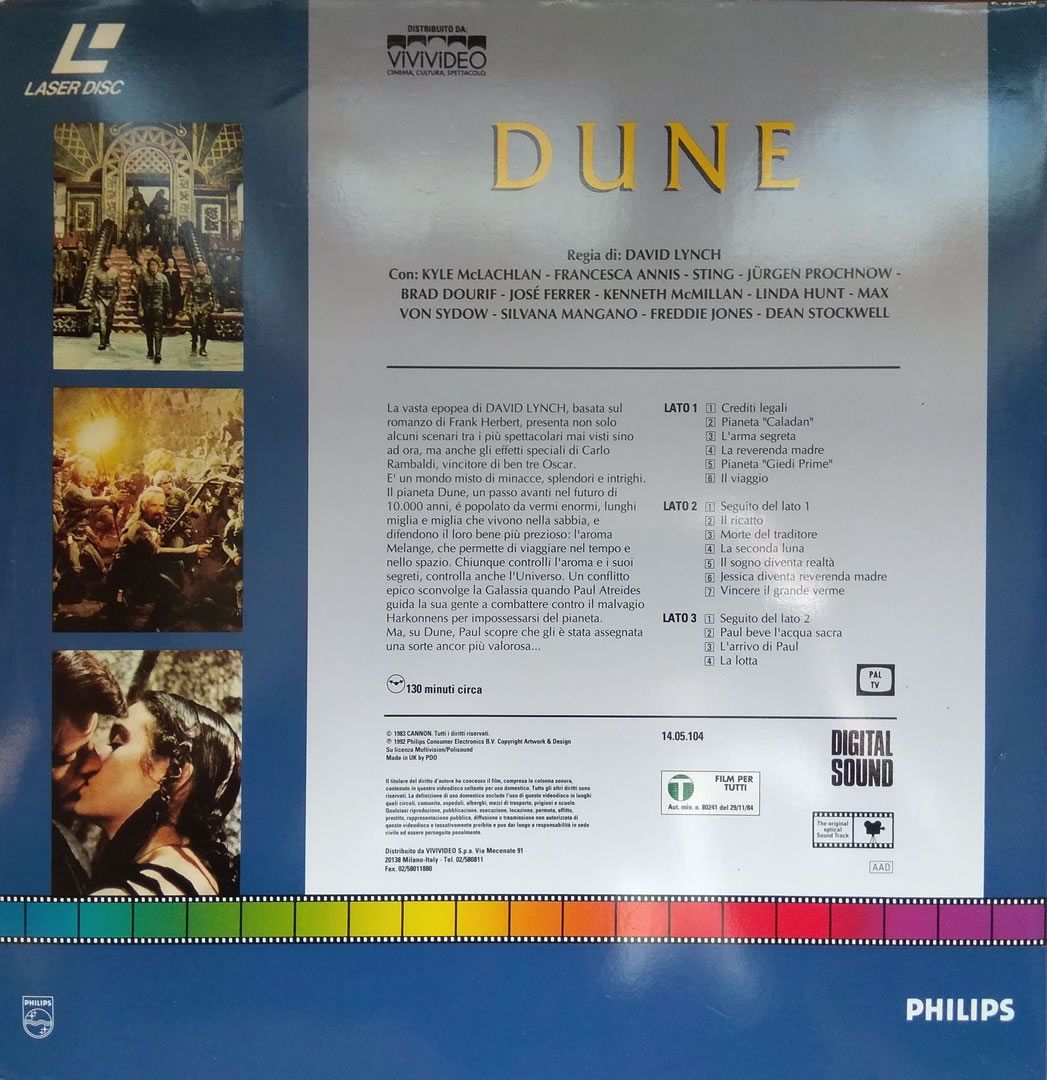
Italy had a single LaserDisc release of Dune, published by Philips, and the cover features the poster by Renato Casaro. Like the U.K. Thorn EMI release, this was 130 minutes long, spread across three sides of two discs in pan and scan (4:3) CLV format. The audio was a mono Italian dub digital audio track.
Summary
While LaserDiscs offered better picture and sound quality than VHS tapes, subsequent home video formats such as DVD and Blu-ray mean that we can’t suggest that LaserDiscs are the best way to enjoy Lynch’s Dune in your own home. They are, however, fun items to collect and display. They can often be picked up quite cheaply on sites such as eBay. (But watch out for the postage costs!)
Thanks to LDDb.com and Josh Zyber for their help.



